-
 Bitcoin
Bitcoin $116400
-0.36% -
 Ethereum
Ethereum $4033
3.40% -
 XRP
XRP $3.302
-1.26% -
 Tether USDt
Tether USDt $1.000
-0.02% -
 BNB
BNB $796.1
1.67% -
 Solana
Solana $177.8
1.89% -
 USDC
USDC $0.9999
0.00% -
 Dogecoin
Dogecoin $0.2314
4.09% -
 TRON
TRON $0.3381
0.14% -
 Cardano
Cardano $0.7989
1.22% -
 Stellar
Stellar $0.4496
-1.84% -
 Chainlink
Chainlink $20.42
9.42% -
 Hyperliquid
Hyperliquid $41.17
0.88% -
 Sui
Sui $3.914
3.77% -
 Bitcoin Cash
Bitcoin Cash $584.7
1.52% -
 Hedera
Hedera $0.2632
-0.54% -
 Avalanche
Avalanche $24.09
3.40% -
 Ethena USDe
Ethena USDe $1.001
-0.02% -
 Litecoin
Litecoin $123.2
1.33% -
 Toncoin
Toncoin $3.318
-0.04% -
 UNUS SED LEO
UNUS SED LEO $8.984
-0.05% -
 Shiba Inu
Shiba Inu $0.00001323
2.85% -
 Uniswap
Uniswap $10.90
4.41% -
 Polkadot
Polkadot $3.999
3.34% -
 Dai
Dai $1.000
0.01% -
 Cronos
Cronos $0.1630
9.64% -
 Bitget Token
Bitget Token $4.484
0.82% -
 Monero
Monero $272.4
2.44% -
 Pepe
Pepe $0.00001173
6.03% -
 Aave
Aave $290.8
2.88%
Where can I view Gate.io's earnings record?
Gate.io doesn't release public financials, common in crypto, but trading volume, market share, and news offer indirect performance insights. Always approach cautiously.
Apr 01, 2025 at 10:17 am
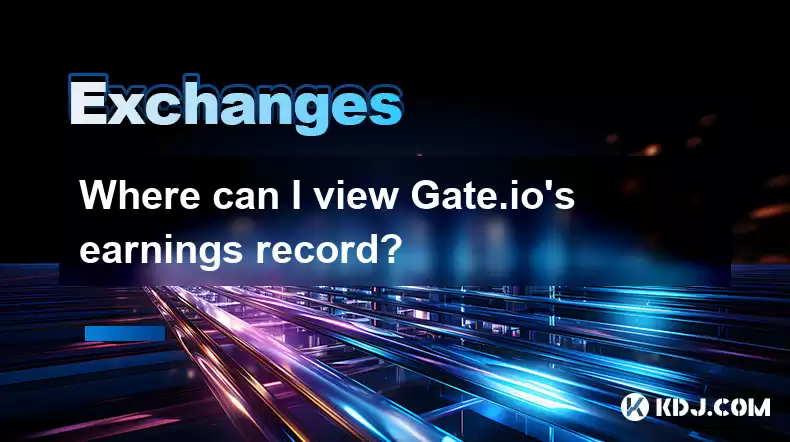
Gate.io, a prominent cryptocurrency exchange, doesn't publicly release detailed financial statements like traditional publicly traded companies. This is common within the cryptocurrency exchange industry due to regulatory complexities and competitive sensitivities. However, there are ways to gain some insights into their performance. Understanding the limitations is crucial. This article explores the avenues for obtaining information about Gate.io's performance, emphasizing that complete transparency isn't readily available.
Understanding the Lack of Public Financial Statements
Unlike publicly listed companies required to disclose quarterly and annual earnings reports, cryptocurrency exchanges often operate with less stringent public reporting requirements. This is partly due to the relatively nascent regulatory landscape surrounding cryptocurrencies and exchanges. Gate.io's internal financial data is likely confidential and used for internal management and strategic decision-making. The lack of public financial statements doesn't necessarily indicate wrongdoing; it's a common practice within the industry.
Indirect Indicators of Gate.io's Performance
While direct access to Gate.io's earnings record is unavailable, certain indirect indicators can provide clues about their financial health and operational success. These indicators, however, should be interpreted cautiously and not taken as definitive proof of profitability or loss.
Trading Volume: High trading volume generally suggests greater revenue potential for an exchange. Gate.io publishes its 24-hour and historical trading volume data on its website. Analyzing these trends over time can give a rough estimate of their activity. Remember, however, that volume doesn't directly translate to profit due to fees and operational costs.
Market Share: Gate.io's market share within the cryptocurrency exchange landscape is another indirect measure. A larger market share often correlates with higher trading volume and potentially greater revenue. While precise market share figures are hard to obtain definitively, you can find estimations from various cryptocurrency market analysis websites. These estimations often vary.
News and Announcements: Official announcements from Gate.io regarding partnerships, new listings, and technological upgrades can indirectly suggest their financial health and growth trajectory. Positive announcements might signal a healthy financial situation, but this is not a guarantee. Always critically evaluate any news related to cryptocurrency exchanges.
Social Media Activity: While not a reliable financial indicator, monitoring Gate.io's social media presence can offer insights into their activities and overall sentiment. Increased user engagement and positive feedback might suggest a healthy platform, but this is purely speculative.
Alternative Sources of Information (with caveats)
While Gate.io doesn't directly publish its earnings, some third-party analysts and research firms might attempt to estimate their financial performance based on publicly available data. However, treat such estimates with extreme caution. These estimations often rely on assumptions and may not be entirely accurate. Always verify information from multiple reliable sources.
Third-Party Analytics Platforms: Several websites track cryptocurrency exchange performance, offering estimates of trading volume and market share. Remember that these are estimates and not official figures.
Financial News Articles: Reputable financial news outlets sometimes publish articles analyzing the performance of major cryptocurrency exchanges, including Gate.io. However, this information is often based on speculation or limited data.
What Gate.io Does Publicly Share
Gate.io does make certain information public, although it doesn't directly equate to a complete earnings record. This information can provide some context:
Fees: Gate.io clearly outlines its trading fees and other charges on its website. This transparency is important for users to understand their costs.
Listed Assets: The range and number of cryptocurrencies listed on Gate.io can reflect its market reach and operational scale. A wider range of assets might suggest a more robust platform.
Security Measures: Gate.io publicly discusses its security measures to instill user confidence. This is vital, but it doesn't directly relate to its financial performance.
Exploring Transparency in the Crypto Exchange Industry
The lack of comprehensive public financial reporting is a common challenge within the cryptocurrency exchange industry. Regulatory frameworks are still developing, and exchanges often prioritize competitive advantage and data security over complete financial transparency. This situation is likely to evolve as the industry matures and regulatory clarity increases. However, for now, relying on indirect indicators and understanding the limitations is crucial when assessing the performance of any cryptocurrency exchange.
Frequently Asked Questions
Q: Why doesn't Gate.io publicly release its earnings?
A: Gate.io, like many cryptocurrency exchanges, doesn't publicly release detailed financial statements due to a combination of factors, including the evolving regulatory landscape for cryptocurrencies, competitive sensitivities, and internal data security concerns.
Q: Are there any risks associated with the lack of transparency?
A: Yes. The lack of transparent financial reporting can increase the risk for users. Without clear financial information, it is harder to assess the financial stability and long-term viability of the exchange. This could potentially impact the security of users' funds.
Q: How can I assess the reliability of Gate.io?
A: While a complete earnings record is unavailable, you can assess Gate.io's reliability by looking at its trading volume, security measures, user reviews, and length of operation. Remember to always diversify your cryptocurrency holdings across multiple exchanges.
Q: What are the implications of this lack of transparency for investors?
A: The lack of transparency makes it more challenging for investors to make fully informed decisions. It increases the reliance on indirect indicators and estimations, which may not be entirely accurate. Investors should proceed with caution and conduct thorough due diligence before using any cryptocurrency exchange.
Q: Is this lack of transparency unique to Gate.io?
A: No, this is a common practice among many cryptocurrency exchanges. The industry is still developing, and regulatory requirements regarding financial reporting are not yet standardized or universally enforced.
Disclaimer:info@kdj.com
The information provided is not trading advice. kdj.com does not assume any responsibility for any investments made based on the information provided in this article. Cryptocurrencies are highly volatile and it is highly recommended that you invest with caution after thorough research!
If you believe that the content used on this website infringes your copyright, please contact us immediately (info@kdj.com) and we will delete it promptly.
- Bitcoin Goes to Harvard: Ivy League Embraces Digital Assets
- 2025-08-09 10:50:12
- Arctic Pablo Coin: The Meme Coin Presale Promising High ROI in Q3 2025
- 2025-08-09 10:50:12
- Pepe Price, Millionaire Potential, and Layer Brett: The Next Big Meme Coin?
- 2025-08-09 10:30:12
- Meme Coins: Multiply Your Investment with the Right Hype in 2025
- 2025-08-09 10:30:12
- Crypto, Million, Investment: Turning $1K into $1M in the Wild World of Digital Assets
- 2025-08-09 10:55:12
- Coinbase, UK Ban, and the Shifting Sands of the Financial System: A New Yorker's Take
- 2025-08-09 11:00:12
Related knowledge
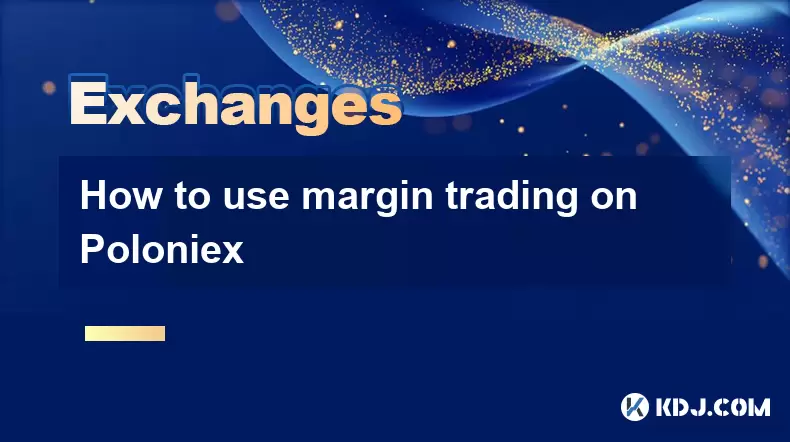
How to use margin trading on Poloniex
Aug 08,2025 at 09:50am
Understanding Margin Trading on Poloniex
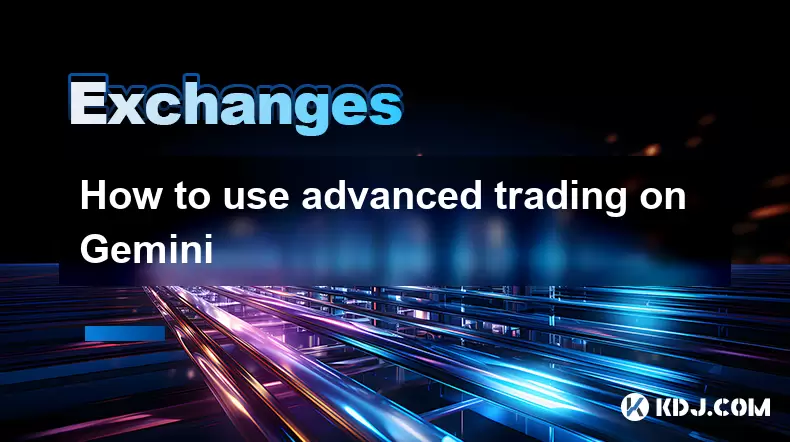
How to use advanced trading on Gemini
Aug 08,2025 at 04:07am
Understanding Advanced Trading on GeminiAdvanced trading on Gemini refers to a suite of tools and order types designed for experienced traders who wan...
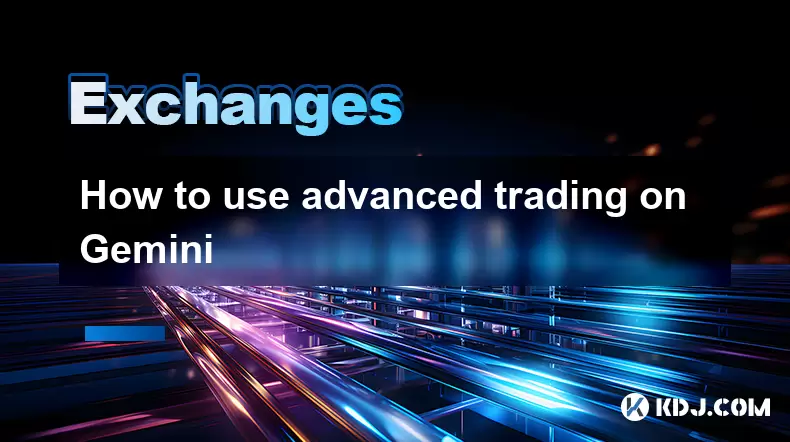
How to use advanced trading on Gemini
Aug 08,2025 at 10:56pm
Understanding Advanced Trading on GeminiAdvanced trading on Gemini refers to the suite of tools and order types available on the Gemini ActiveTrader p...
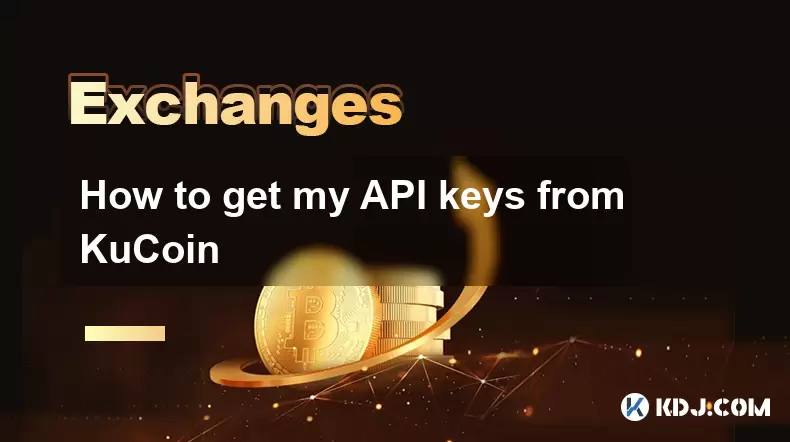
How to get my API keys from KuCoin
Aug 08,2025 at 06:50pm
Understanding API Keys on KuCoinAPI keys are essential tools for users who want to interact with KuCoin's trading platform programmatically. These key...
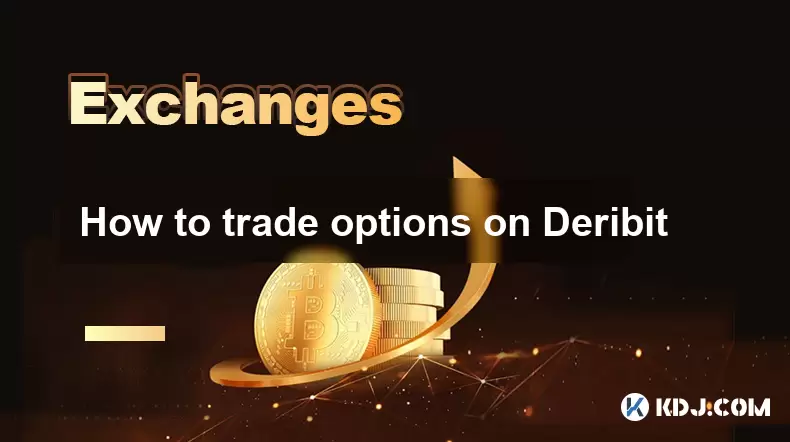
How to trade options on Deribit
Aug 09,2025 at 01:42am
Understanding Deribit and Its Options MarketDeribit is a leading cryptocurrency derivatives exchange that specializes in Bitcoin (BTC) and Ethereum (E...
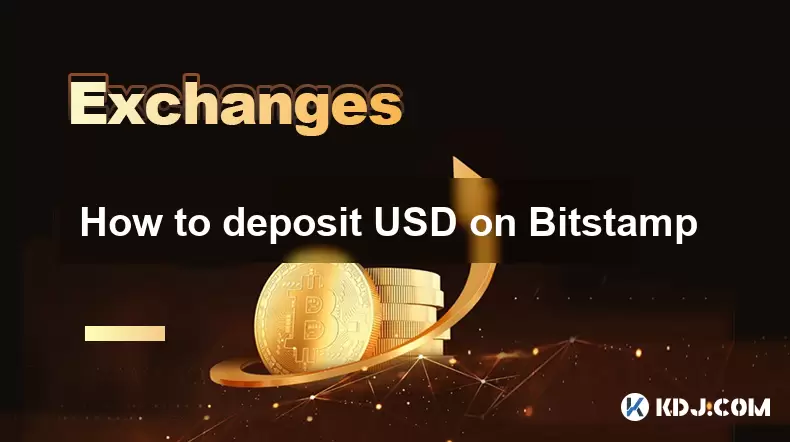
How to deposit USD on Bitstamp
Aug 07,2025 at 05:18pm
Understanding Bitstamp and USD DepositsBitstamp is one of the longest-standing cryptocurrency exchanges in the industry, offering users the ability to...

How to use margin trading on Poloniex
Aug 08,2025 at 09:50am
Understanding Margin Trading on Poloniex

How to use advanced trading on Gemini
Aug 08,2025 at 04:07am
Understanding Advanced Trading on GeminiAdvanced trading on Gemini refers to a suite of tools and order types designed for experienced traders who wan...

How to use advanced trading on Gemini
Aug 08,2025 at 10:56pm
Understanding Advanced Trading on GeminiAdvanced trading on Gemini refers to the suite of tools and order types available on the Gemini ActiveTrader p...

How to get my API keys from KuCoin
Aug 08,2025 at 06:50pm
Understanding API Keys on KuCoinAPI keys are essential tools for users who want to interact with KuCoin's trading platform programmatically. These key...

How to trade options on Deribit
Aug 09,2025 at 01:42am
Understanding Deribit and Its Options MarketDeribit is a leading cryptocurrency derivatives exchange that specializes in Bitcoin (BTC) and Ethereum (E...

How to deposit USD on Bitstamp
Aug 07,2025 at 05:18pm
Understanding Bitstamp and USD DepositsBitstamp is one of the longest-standing cryptocurrency exchanges in the industry, offering users the ability to...
See all articles

























































































